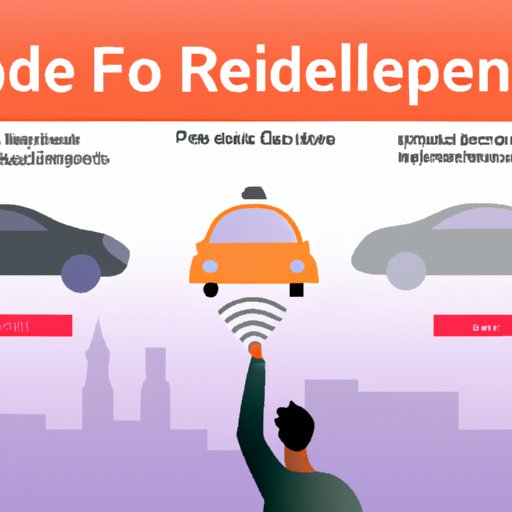Introduction
The free rider problem is an economic concept that describes a situation in which individuals are able to benefit from the efforts of others without contributing anything themselves. This problem can be seen in many aspects of society, including public transportation, education, and health care. It occurs when people are able to take advantage of publicly funded goods and services without paying their fair share, resulting in an unequal distribution of resources.
The effects of the free rider problem can be far-reaching and detrimental to society. For instance, it can lead to a decrease in public transportation usage as people opt to drive their own cars instead of using public transportation, resulting in higher levels of traffic congestion and air pollution. It can also lead to a decrease in public school funding as people opt out of paying taxes, resulting in a decrease in educational quality and opportunities. Furthermore, it can lead to an increase in health care costs due to people taking advantage of publicly funded services without contributing to the cost.

Penalty System for Free Riders
One potential solution to the free rider problem is to implement a penalty system for those who do not pay their fair share. This could include fines for those who do not pay taxes or fees for those who use public transportation without paying. The benefits of this approach include increased revenue, which can then be used to improve public services, and increased fairness, as those who do not contribute will be held accountable. However, this approach can be difficult to implement and monitor, as it requires the tracking of individual contributions.
Increase in Public Transportation Fares
Another potential solution to the free rider problem is to increase the cost of public transportation. This would reduce the incentive for people to take advantage of public transportation without paying, as they would have to pay more for the same service. Additionally, the increased revenue generated by the fare increase could be used to improve the quality of public transportation services. However, this approach could be disadvantageous to those who rely on public transportation, as they may not be able to afford the increase in fares.

Increase in the Cost of Car Ownership
A third potential solution to the free rider problem is to increase the cost of car ownership. This could include increasing the cost of fuel, insurance, and car registration fees. This would make car ownership less attractive, thus reducing the incentive for people to drive their own cars instead of using public transportation. Additionally, the increased revenue generated by the fee increases could be used to improve public transportation services. However, this approach could be disadvantageous to those who rely on their cars for transportation, as they may not be able to afford the increased costs.
Education and Awareness Campaigns
In addition to the above solutions, another potential solution to the free rider problem is to create education and awareness campaigns about the issue. These campaigns could focus on the negative effects of the free rider problem, such as decreased public transportation usage, decreased public school funding, and increased health care costs. They could also focus on the importance of contributing one’s fair share in order to ensure the sustainability of public services. Such campaigns could help to raise awareness of the issue and encourage people to contribute their fair share.
Offering Incentives for Carpooling and Other Forms of Shared Transportation
Another potential solution to the free rider problem is to offer incentives for carpooling and other forms of shared transportation. This could include tax credits or discounts on car insurance for those who carpool, or discounts on public transportation fares for those who use shared transportation. The benefits of this approach include reduced traffic congestion and air pollution, as well as increased revenue for public transportation services. Additionally, it could encourage people to contribute their fair share by taking advantage of the incentives offered.
Implementation of Ride-Sharing Services
Another potential solution to the free rider problem is to implement ride-sharing services, such as Uber and Lyft. These services provide an alternative to driving one’s own car, thus reducing the incentive for people to take advantage of public transportation without paying. Additionally, the increased revenue generated by these services could be used to improve public transportation services. However, there are potential challenges associated with this approach, such as ensuring the safety of passengers and protecting the interests of taxi drivers.

Government Subsidies for Public Transportation
Finally, another potential solution to the free rider problem is to provide government subsidies for public transportation. This could include providing funds for improving public transportation infrastructure and services, as well as offering discounted fares for low-income individuals. The benefits of this approach include increased access to public transportation for those who cannot afford it, as well as increased revenue for public transportation services. However, this approach could be disadvantageous to taxpayers, as they would have to bear the cost of the subsidies.
Conclusion
The free rider problem is a complex issue that affects many aspects of society, including public transportation, education, and health care. Fortunately, there are a number of potential solutions to this problem, including implementing a penalty system, increasing public transportation fares, increasing costs of car ownership, offering incentives for carpooling, creating education and awareness campaigns, and providing government subsidies. By implementing these solutions, we can reduce the incentive for people to take advantage of publicly funded goods and services without contributing their fair share, thus ensuring the sustainability of our public services.
(Note: Is this article not meeting your expectations? Do you have knowledge or insights to share? Unlock new opportunities and expand your reach by joining our authors team. Click Registration to join us and share your expertise with our readers.)
